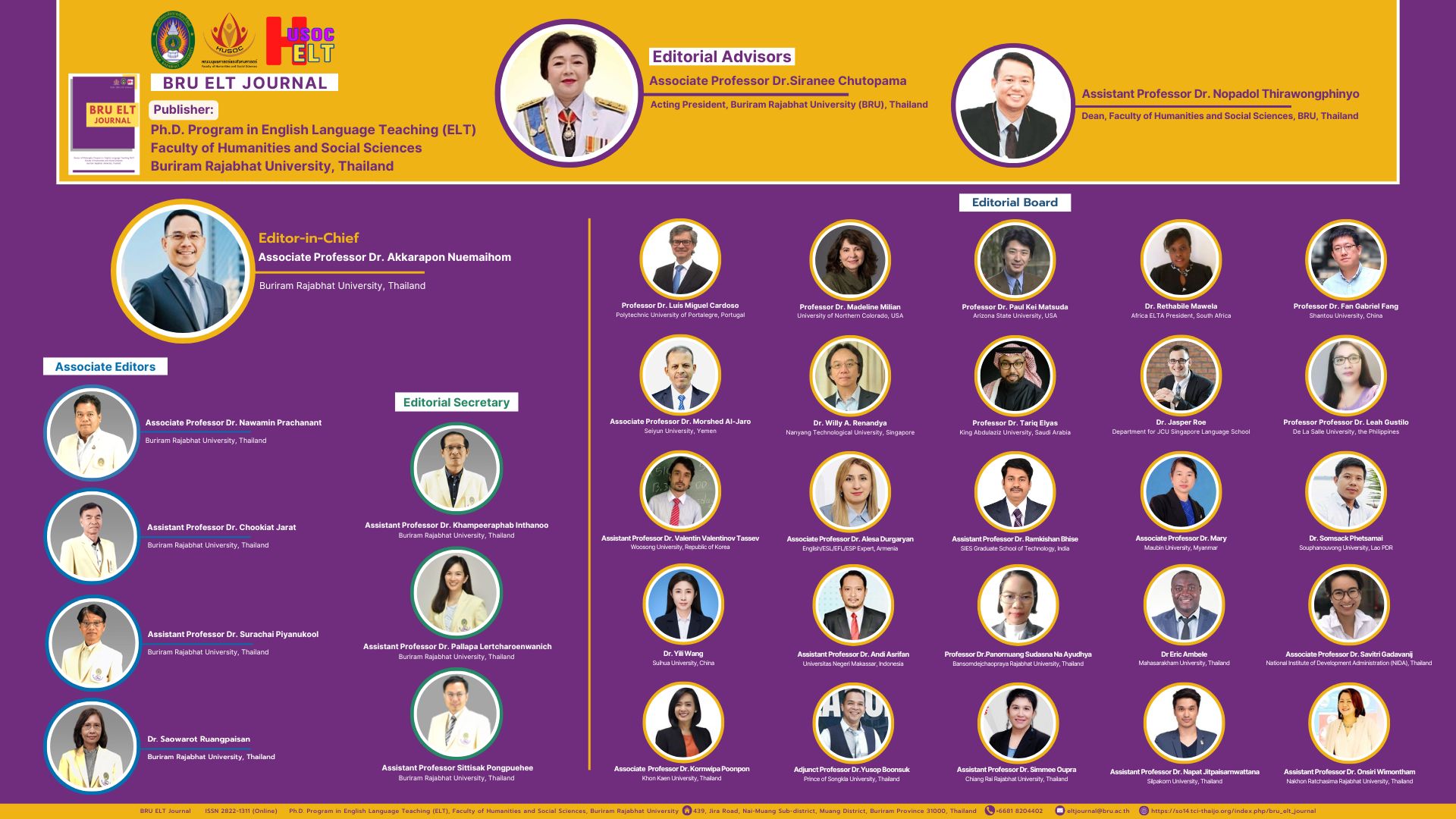Enhancing English Learning Engagement through Kahoot: A Study at Warmadewa University’s English Language and Literature Program
DOI:
https://doi.org/10.14456/bej.2024.5Keywords:
game-based learning, student engagement, English language learning, motivation in education, blended learning approachesAbstract
This study investigated the impact of Kahoot, a game-based learning platform, on student engagement in English language education at Warmadewa University. The analysis showed that Kahoot significantly improved students' motivation, participation and overall quality of learning by providing instant feedback and fostering a competitive yet fun learning environment. According to Self-Determination Theory, this environment effectively fulfills students' psychological needs for competence, autonomy and relatedness, thus enhancing intrinsic motivation. In addition, Kahoot embodies the principles of the edutainment model by turning learning into an experiential and engaging journey. Comparative analysis with traditional teaching methods highlights Kahoot's superiority in promoting higher levels of engagement and motivation. This study suggests a hybrid educational approach that integrates the interactive features of Kahoot with the educational depth of traditional methods. Specific integration strategies include differentiated learning sessions and adaptive feedback mechanisms to cater to diverse student needs and preferences. Recommendations for implementing these strategies are directly informed by the research findings, addressing existing gaps in language education and increasing the relevance and impact of the research.
References
Alawadhi, A., & Abu-Ayyash, E. (2021). Students’ perceptions of Kahoot!: An exploratory mixed-method study in EFL undergraduate classrooms in the UAE. Education and Information Technologies, 26, 3629-3658. https://doi.org/10.1007/s10639-020-10425-8
Bonwell, C. C., & Eison, J. A. (1991). Active learning: Creating excitement in the classroom. ASHE-ERIC Higher Education Report, School of Education and Human Development, George Washington University.
Charanjit Kaur Swaran Singh, Kanmani Rengasamy, Tarsame Singh Masa Singh, Eng Tek, Ong, Melor Md Yunus, Henita Rahmayanti, & Ilmi Zajuli Ichsan. (2020). A review of research on the effectiveness of using Kahoot to enhance students’ motivation to learn English. PalArch’s Journal of Archaeology of Egypt / Egyptology, 17(6), 12252-12264. https://archives.palarch.nl/index.php/jae/article/view/3063
Hancox, J., Ntoumanis, N., Thøgersen‐Ntoumani, C., & Quested, E. (2015). Self-determination theory. https://doi.org/10.4135/9781483346243.n302.
Hapsari, F. S., Frijuniarsi, N., & Astuti, N. T. (2021). Using Kahoot! in distance learning to increase engineering students’ English skill. Journal of Development Research, 5(1), 51-60. https://doi.org/10.28926/jdr.v5i1.152
Huriyah, H. (2022). Motivate students to learning English using the Kahoot game. International Journal of Social Science and Human Research, 5(7), 3104-3107. https://doi.org/10.47191/ijsshr/v5-i7-45.
Husin, M., & Azmuddin, R. (2022). Learner engagement in using Kahoot! within a university English proficiency course. Educational Process International Journal, 11(2), 167-180. https://doi.org/10.22521/edupij.2022.112.9.
Khatibi, M., & Badeleh, A. (2021). The Potential of using Kahoot to empower EFL learners: An experience of game-based learning. Research in English Language Pedagogy, 0(9), 44-60. https://doi.org/10.30486/RELP.2021.1930824.1273.
Kohnke, L., & Moorhouse, B. (2021). Using Kahoot! to Gamify Learning in the Language Classroom. RELC Journal, 53(3), 769-775. https://doi.org/10.1177/00336882211040270.
Noor, P. (2023). Kahoot! As a digital quiz in learning English: Graduate students’ perspectives. English Education: Journal of English Teaching and Research, 8(2), 124-132. https://doi.org/10.29407/jetar.v8i2.20153.
Pham, T., & Duong, D. (2022). Using Kahoot! In Vocabulary learning: evidence from a vietnamese higher education context. VNU Journal of Foreign Studies, 38(3), 138-152. https://doi.org/10.25073/2525-2445/vnufs.4849.
Prensky, M. (2001). Digital natives, digital immigrants part 2: Do they really think differently?, On the Horizon, 9(6), 1-6 https://doi.org/10.1108/10748120110424843.
Prieto, M., Palma, L., Tobías, P., & León, F. (2019). Student assessment of the use of Kahoot in the learning process of science and mathematics. Education Sciences, 9(1), 55. https://doi.org/10.3390/EDUCSCI9010055.
Rojabi, A., Setiawan, S., Munir, A., Purwati, O., Safriyani, R., Hayuningtyas, N., Khodijah, S., & Amumpuni, R. (2022). Kahoot, is it fun or unfun? Gamifying vocabulary learning to boost exam scores, engagement, and motivation. Front. Educ, 7. https://doi.org/10.3389/feduc.2022.939884.
Situmorang, K., & Simanjuntak, D. (2023). EFL teachers’ perceptions of Kahoot as an online learning platform in promoting basic English vocabulary. JOLLT Journal of Languages and Language Teaching, 11(2), 251-262 https://doi.org/10.33394/jollt.v11i2.7525.
Warford, M. (2011). The zone of proximal teacher development. Teaching and Teacher Education, 27(2), 252-258. https://doi.org/10.1016/J.TATE.2010.08.008.






